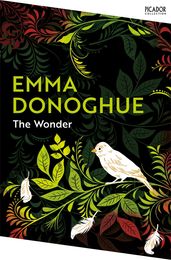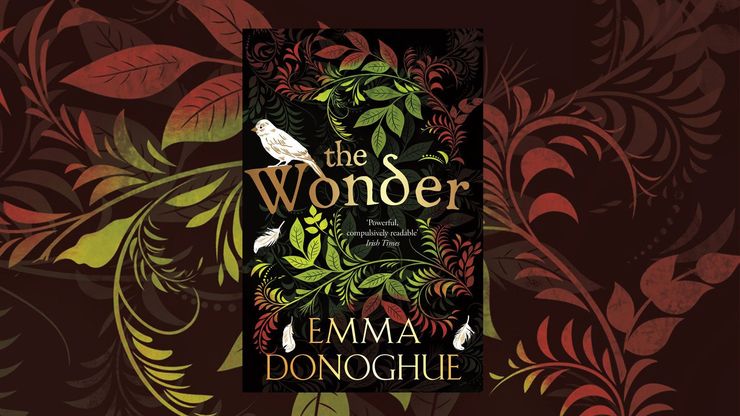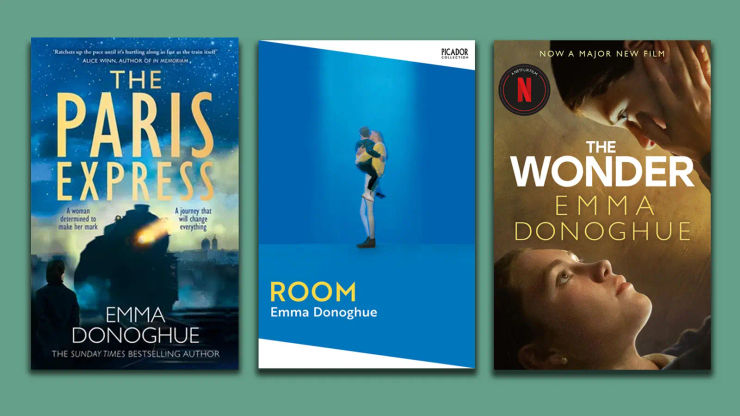Is The Wonder based on a true story?
Emma Donoghue, bestselling author of The Wonder – now a major Netflix film – examines the true story of the 'fasting girl' phenomenon.

Netflix’s The Wonder, starring Florence Pugh and Ciarán Hinds and based on the novel by Emma Donoghue, follows the story of Anna, a young girl who is said to have lived for months without food. Tourists descend on her village to witness her sensational survival; a journalist arrives, hungry for a story. Amongst them comes Lib Wright, a nurse sent to discover the truth: whether Anna is something miraculous, or part of a complicated deceit.
Historical reports of ‘fasting girls’ date back as far as 1500 and continue to perplex, the stories evoking a heady mix of medical marvel, religious fanaticism and peculiar fame. Here, Emma Donoghue tells us about the real cases that inspired her work of historical fiction.
Is The Wonder based on true events?
The Wonder is an invented story, but what inspired it was the very real phenomenon of ‘the fasting girl,’ who claimed – or was said by others – to be able to live without food. I came across 'fasting girls' back in the mid-1990s – so long ago that I can't even remember where I first read about them. (It may have been during background research for ‘Revelations', a story I published in 2002 about an eighteenth-century Scottish cult who stopped eating in preparation for the End Times.)
I was instantly intrigued by these cases, which seemed to echo medieval saints starving as an act of penance, and also modern anorexics, but weren't exactly the same as either. In researching the novel I looked at almost fifty of them, which ranged from Ireland and Britain, to Western Europe, to the USA and Canada, from the 1500s right through to the 1900s. That’s an average of only about one a decade; these self-starving celebrities were very rare. In some cases they may have heard of each other, but the cases didn’t cluster; they happened at long, random intervals, anywhere from urban Brooklyn to rural Wales.
The occasional famous faster was male, but usually men who hit the headlines for not eating did it as a clearly commercial performance, exhibiting themselves at fairs. The vast majority of the fasters were female; though they ranged in age, and included some mothers, they were typically in their teens. I thought it said a lot about what it's meant to be a girl – in many Western countries, from the sixteenth century right through to the twentieth – that these girls became celebrities by not eating. Paradoxically, they got power – attention, fame, sometimes fortune – by being weak and self-sacrificial, the ultimate in meek femininity. Sometimes they were given money and other gifts by their admiring visitors and fans, but that was not their professed motive. So what was?
Well, from the perspective of 2022 the obvious first guess would be anorexia – an eating disorder first identified in the 1870s, characterised by a terror of gaining weight. But descriptions of these ‘fasting girls’ and summaries of interviews with them or their families barely mention looks or body image (thinness and beauty). Whether the writer thinks the girl really is a miracle or is faking it, the emphasis is on her claimed ability to live without food.
I’d say the most common link is Christian faith: whether Catholic or Protestant, many of these girls were praised as heroines in the medieval tradition of saints such as Catherine of Siena who were said to have been able to survive lengthy fasts as well as other forms of penance to expiate their sins and those of others. Sometimes in the eighteenth- and nineteenth-century sources the girl is described in secular terms as a medical (rather than religious) miracle, or even as a sad, strange case history, but still, the focus remains on the faster’s claims to extraordinary powers.
Even when the main focus was religion, it seems obvious that there was an overlap with what we call anorexia, especially since these girls were praised for their virginal purity – for an eerie ability to rise above the urges of the body – which echoes what many of those living with anorexia say about it being more about control than thinness. It’s possible to see these girls as victims of a society obsessed with policing femininity, while also acknowledging that they managed to win status and fame.
So what happened to these young women? Some were put under surveillance and exposed as hoaxers; some were imprisoned, hospitalised, coerced into eating or force-fed. Some starved to death, and others managed to live for many decades, apparently without food. In many cases a girl was briefly mentioned in a newspaper, and then faded from the historical record, keeping her secrets. Though we only know of a few dozen of these fasters, I find it fascinating and troubling that this cultural fantasy has kept recurring, century after century: a girl so pure that she rises above all the low demands of the flesh.
Was Anna O’Donnell a real person?
I never found one real case that rang that little bell in me, telling me this was the story I had to tell in a novel. Some were too tragic, even for a writer with my dark tastes; Sarah Jacob, for instance, a little girl died while being ‘watched' by nurses in 1869. Some were low comedy, such as the case of Ann Moore, exposed as a cheat in 1813.
It occurred to me that if I was still so fascinated by the fasting girls, two decades on, I should drop my usual method of writing a historical novel based on one real case, and let myself invent a story that would have in it everything I wanted to explore about this phenomenon.
I'd set it in Ireland, of course - not just because that's my homeland, but because ever since the Great Famine of the 1840s, we've defined ourselves as a people intimate with hunger. I decided to set my story in the late 1850s, at a sort of hinge point between older interpretations of the fasters (magic, miracle) and the newer or more scientific theories (fraud, hysteria) that would lead to the coining of the term anorexia in the 1870s.
The 1850s was also when many Christians – sometimes prompted by Darwin's discoveries – began to question their faith, so it's a perfect moment for staging the battle between an agnostic and a mystic that animates The Wonder. The details of the novel may be about Catholicism, but what I urgently wanted to explore was fundamentalism and extremism more generally: what is it that makes an idealistic young person sign up to a system that may destroy them?
Ultimately The Wonder is a very personal novel for me, not only because it's about Ireland but because it's all about a relationship – one long, thoughtful, tender conversation – between a woman and a girl, and I put into it much I've learned from motherhood.
The Wonder
by Emma Donoghue
Eleven-year-old Anna O'Donnell stops eating, but remains miraculously alive and well. A nurse, sent to investigate whether she is a fraud, meets a journalist hungry for a story . . .
Inspired by numerous European and North American cases of 'fasting girls' between the sixteenth century and the twentieth, The Wonder is a psychological thriller about a child's murder happening in slow motion. A novel which promises to stay with you long after the final page, this is historical fiction at its finest.



